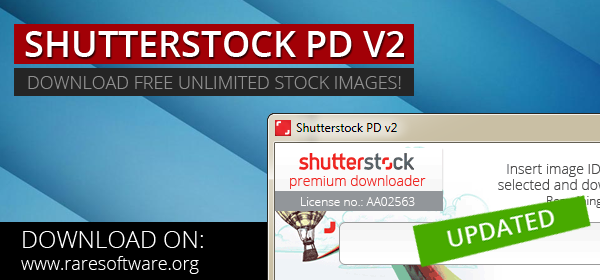If you’re looking to spice up your projects with stunning images but don’t want to break the bank, you’re in luck! In 2019, Shutterstock offered some ways to access free photos, making it easier for creators, bloggers, and small businesses to find high-quality visuals without spending a dime. While Shutterstock is primarily known for its paid library, there were opportunities and methods to get free images legally. Whether you’re working on a website, presentation, or social media post, understanding how to access free
Understanding Shutterstock’s Licensing and Usage Policies

Before you start downloading free Shutterstock photos, it’s crucial to understand their licensing and usage policies. Shutterstock operates under strict licensing rules to protect both creators and users. Here’s a quick rundown:
- Standard License: Most Shutterstock images are licensed under a standard license, which allows for use in digital and print projects but with some restrictions (like limits on print runs and no use in merchandise).
- Enhanced License: For commercial uses that require more extensive rights, such as merchandise or large-scale advertisements, an enhanced license is necessary.
- Free Images: Shutterstock occasionally offers free images, but these are typically under specific conditions and may be limited in number. Always check the licensing terms associated with each free image.
It’s important to note that even free Shutterstock photos are protected by licensing agreements. This means you cannot claim ownership or use them beyond permitted terms. For example, you shouldn’t resell or redistribute the images as standalone files. Always review the licensing details provided with each image to ensure your intended use complies.
Additionally, Shutterstock‘s policies prohibit certain uses such as creating derivative works that could harm the image creator’s reputation or using images in a way that is defamatory or unlawful. Violating these policies can lead to legal issues, so always read the licensing agreements carefully.
In summary, while free Shutterstock photos can be a fantastic resource, respecting licensing terms is essential to stay within legal boundaries and support the hardworking photographers and artists behind these images. When used properly, they can greatly enhance your projects without any copyright worries.
Legal Ways to Access Free Shutterstock Images

So, you’re eager to find free Shutterstock photos without getting into any legal hot water? That’s a smart approach! Shutterstock is a treasure trove of high-quality images, but most of them are licensed for purchase. However, there are legitimate ways to access some of their images without spending a dime.
Here are some legal options you can explore:
- Shutterstock Free Trial: Shutterstock often offers a free trial period, typically 7 days, during which you can download a limited number of images for free. Just sign up, and you’ll be able to access their library during the trial without any charges. Remember to cancel if you don’t want to be billed afterward!
- Shutterstock’s Free Image Collection: Every month, Shutterstock releases a handful of images that are available for free download. These are clearly marked on their website under the “Free Images” section. Keep an eye on this to grab some high-quality photos legally and at no cost.
- Participate in Promotions and Giveaways: Occasionally, Shutterstock runs promotions, contests, or partnerships that offer free downloads or credits. Following their official blog or social media pages can keep you in the loop for such opportunities.
- Use Shutterstock’s Free API Access for Developers: If you’re a developer or work on a project that can benefit from Shutterstock images, you might explore their API, which sometimes offers limited free access for testing purposes.
Always remember, even when downloading free images, to respect the licensing terms. Avoid using images in a way that violates Shutterstock’s policies or the rights of the photographers. When in doubt, opt for images explicitly labeled as free or in the public domain, and cite the source if required.
Tips for Finding Free Shutterstock Photos Safely

Finding free Shutterstock images online can feel like walking a tightrope—there’s a lot of content out there, but not all of it is safe or legal to use. To make sure you’re on the right side of the law and protecting your projects, here are some handy tips:
- Stick to Official Sources: Always download images directly from Shutterstock’s official website or through trusted platforms that partner with Shutterstock. Avoid third-party sites that claim to offer free Shutterstock images—they might be illegal or contain malware.
- Check the License Details Carefully: When you find an image that seems free, read the licensing information thoroughly. Some images are free for personal use but require attribution or have restrictions on commercial use.
- Beware of Copyright Infringement: Using images without proper rights can lead to legal trouble. If an image isn’t explicitly marked as free or licensed for your intended use, it’s best to avoid it.
- Use Reputable Stock Photo Websites: Besides Shutterstock, consider platforms like Unsplash, Pexels, and Pixabay. They offer a wide selection of free images with clear licenses, often including commercial rights. Sometimes, these sites even feature Shutterstock images legally uploaded for free use.
- Install Security and Anti-Malware Tools: When downloading images from any source, ensure your device is protected. Use updated security software to prevent malware or phishing attempts that are sometimes associated with dubious sites.
- Keep Records of Your Downloads: Save screenshots or download receipts of free images, especially if attribution or licensing terms are involved. This can help if questions arise later about your usage rights.
By following these tips, you can enjoy a steady stream of beautiful Shutterstock photos without risking legal issues or security threats. Remember, respecting artists’ rights and following licensing agreements not only keeps you compliant but also supports creators who produce the amazing images we love to use.
Using Free Shutterstock Photos for Your Projects
Once you’ve found those perfect free Shutterstock photos, you might be wondering how to best use them in your projects. The good news? These images can add a professional touch to a variety of creative endeavors, from blog posts and social media content to presentations and marketing materials.
First off, it’s important to always check the license details associated with each free image. Shutterstock’s free images typically come with a license that allows for commercial and non-commercial use, but it’s good practice to verify if attribution is required or if there are any restrictions.
Here are some popular ways to incorporate free Shutterstock photos:
- Blog posts and articles: Enhance your content with eye-catching visuals that support your narrative.
- Social media: Use striking images to catch attention on platforms like Instagram, Facebook, or Twitter.
- Presentations: Make your slides more engaging with high-quality visuals.
- Marketing materials: Incorporate images into flyers, brochures, or email campaigns to boost professionalism and appeal.
Remember, even though these images are free, they should be used thoughtfully. Avoid overloading your projects with too many visuals—select images that truly complement your message. Also, consider customizing images when possible—adding overlays, text, or filters can help make the visuals more unique and aligned with your brand style.
Lastly, always credit the photographer if the license asks for attribution. Giving credit not only respects creators’ rights but also fosters a positive community around free resources.
Alternatives to Downloading Shutterstock Images for Free
If you’re looking for more options beyond Shutterstock’s free images, don’t worry—you have plenty of other sources for high-quality, free photos. Whether you’re after specific styles or just want to explore different platforms, here are some popular alternatives:
| Platform | Highlights | License Type |
|---|---|---|
| Unsplash | Massive library of high-res photos, easy to search, and great for creative projects. | Creative Commons Zero (CC0) – free for commercial and personal use, no attribution required. |
| Pexels | Beautiful curated collection, also offers videos, user-friendly interface. | CC0 license, no attribution needed. |
| Pixabay | Wide variety of photos, illustrations, and vectors; useful for diverse project needs. | CC0 license, free to use without attribution. |
| Flickr | Community of photographers sharing both free and paid images; good for unique shots. | Check individual licenses—many are Creative Commons licenses requiring attribution. |
| Gratisography | Quirky, artistic photos that stand out; great for creative projects needing a fun vibe. | Free for personal and commercial use, no attribution needed. |
Each of these platforms offers a treasure trove of images, often with different styles and themes. Remember, always double-check the license of each photo to ensure you’re complying with usage rights. Some images might require attribution, especially on Flickr or other community-based sites.
In addition to these free options, many sites offer affordable stock photos if you need something very specific or exclusive. Combining free resources with paid options can give you access to an even wider range of high-quality visuals without breaking the bank.
So, whether you stick with Shutterstock’s free images or explore these alternative sources, there are plenty of ways to find the perfect visuals for your projects—no matter your budget or needs!
Conclusion and Best Practices for Using Shutterstock Photos
Utilizing Shutterstock photos can significantly enhance your projects, but it’s essential to do so responsibly and effectively. Always ensure you have the proper licensing to avoid copyright issues. When downloading free images, verify their usage rights and attribution requirements. Remember that quality matters—choose high-resolution images that align with your content’s purpose to maintain a professional appearance.
Here are some best practices for using Shutterstock photos:
- Respect licensing agreements: Always adhere to the terms specified for free downloads or subscriptions.
- Attribute when required: Some free images may need attribution; check the license details and provide credits accordingly.
- Optimize images: Resize and compress images to ensure fast loading times without sacrificing quality.
- Use relevant keywords: Search efficiently by employing specific keywords for better results.
- Avoid overusing stock photos: Combine Shutterstock images with original content to maintain authenticity and uniqueness.
To sum up, while Shutterstock offers a vast library of high-quality images, responsible usage ensures you maximize their value without legal complications. Following best practices will help you create compelling, professional content that resonates with your audience.


